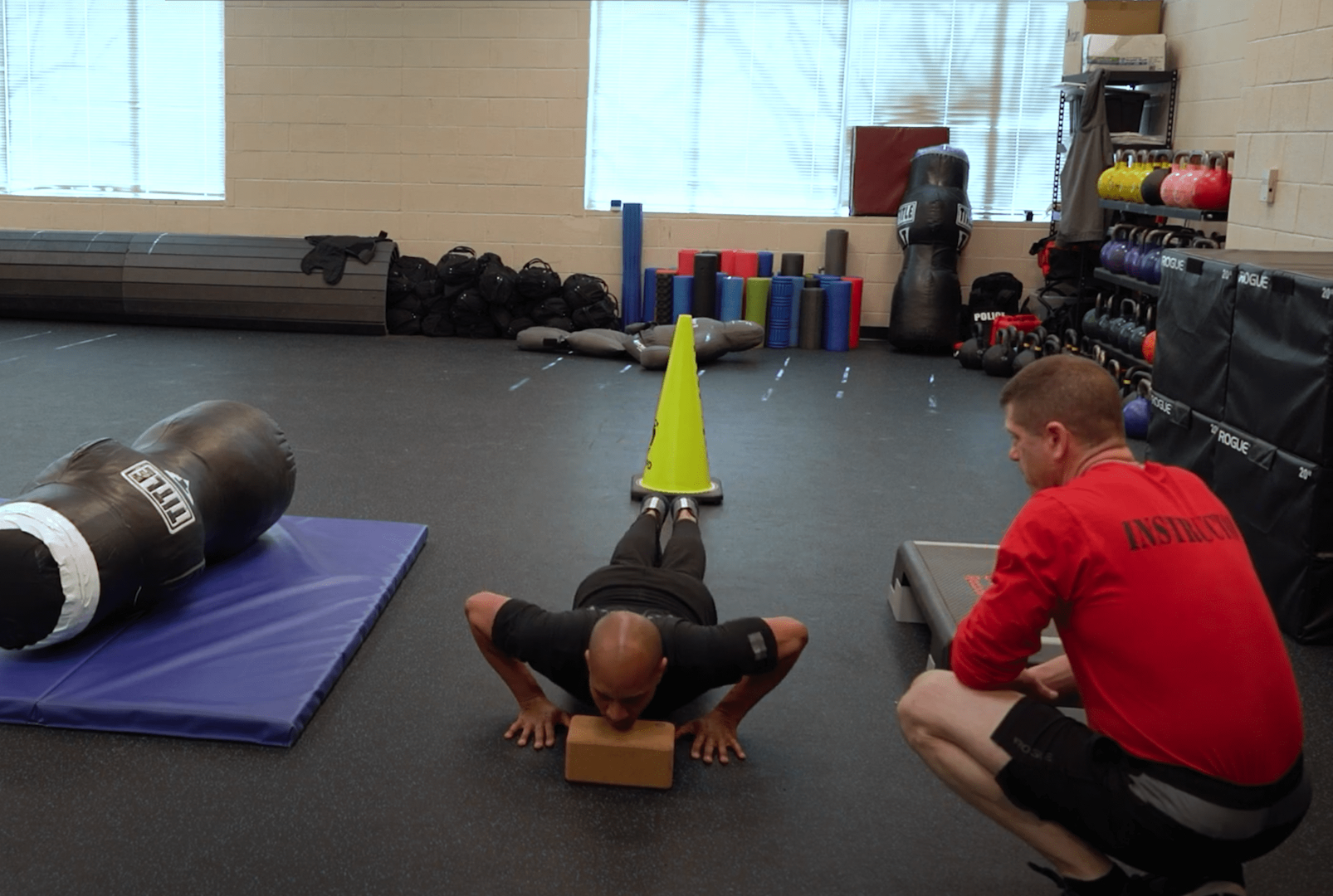Whether you build strength and stamina at the gym, in a CrossFit box or with at-home training setup, you’re on your way to getting the reps you need to ace the Job Related Physical Abilities Test (JRPAT).
But potential new and lateral recruits be aware: The JRPAT can be a grueling gauntlet that combines strength and cardio in ways that simulate real on-the-job demands and challenge even the fittest applicants. (Yes, even you.)
Our best advice: Take the time to understand the test format, then tweak your workout program to focus your training for test day.
About the JRPAT
The JRPAT is step 4 in CMPD’s 6-step application process for new and lateral recruits. It combines six cardio and bodyweight exercises in one timed exam.
“The test shows a baseline fitness level to let us know if recruits will be able to succeed when it comes to the physical aspects of the Academy,” says Officer Jean Wassenaar, who works in CMPD’s Recruiting Unit.
As a state-certified physical fitness instructor, Officer Wassenaar has facilitated many JRPAT testing sessions. Here are her three top tips to help you get ready for a successful test:
Tip 1: Don’t go in blind
If you go into the JRPAT with no prior knowledge of the test, you might leave disappointed, Officer Wassenaar says. The recruits who are most successful have already established their own physical fitness routines.
Even then, though, the JRPAT is a different style of test that combines an array of activities. One of the best ways to prepare is to know exactly what’s coming.
To pass the test, recruits must complete the following circuit in six minutes or less:
- Run from Cone 1 to Cone 2 (40 feet) and back (around Cone 1) two times.
- Run from Cone 1 to Cone 3 (60 feet) while completing the following obstacles:
- 4-foot broad jump
- Crawl under an obstacle (2 feet. high)
- Run from Cone 3 to the Roll Drill Station.
- Complete the Roll Drill two times.
- Complete 10 push-ups (they do not need to be continuous).
- Complete the Roll Drill two more times.
- Run from the Roll Drill Station to Cone 3 (60 feet) while completing the following obstacles:
- 4-foot broad jump
- Crawl under an obstacle (2 feet. high)
- Run from Cone 3 to steps.
- Take 15 steps (up and down) on an 8-inch step box.
- Complete the Roll Drill two more times.
- Complete 10 more push-ups (they do not need to be continuous).
Watch the video below for more on each step and a demo of the full test:
We also host JRPAT / PT info sessions monthly at the CMPD Police Training Academy, located at 1770 Shopton Rd. For more information and upcoming dates, contact CMPD_Recruitment@cmpd.org.
Tip 2: Train a combo of cardio and bodyweight strength work
The JRPAT is designed to mimic the kinds of physical aspects of an officer’s role in the field. That’s never just one thing at a time, so neither is the JRPAT. While the test is only made up of six individual components, those exercises are combined in a way that highlights both cardio and strength. Training with this same combination is important for success.
“In the Academy, we don’t do anything that’s solely cardio or solely strength, so if you’re training that way, you’re going to miss out,” Officer Wassenaar says. “CrossFit-style workouts are the best representation of on-the-job training.”
If you’re a runner, know that cardio alone won’t prepare you for the strength exercises. Similarly, if you focus on strength training, you’ll also need to be prepared to perform while winded.
Even if you don’t belong to a CrossFit box or have a weighted bag to practice with like the ones used during the test, there are still ways to train for the JRPAT.
Officer Wassenaar recommends doing things like stopping during a run for a round of push-ups, or alternating step-ups or jumping jacks with push-ups. The important thing is to practice those strength exercises while your heart rate is elevated.
Tip 3: Prep for the push-ups
There’s a big difference between doing 15 push-ups when you’re fresh, and 15 push-ups when you’re tired, Officer Wassenaar says. For many potential recruits, those rounds of push-ups interspersed throughout the JRPAT can be the toughest component.
The JRPAT video above shows the expected push-up form, including lowering down far enough to touch your chin to a block.
“When working on push-ups at home, people think they can start learning from their knees,” Officer Wassenaar says. “That’s not a good practice because it already puts them into a bad position. You want to stay in the plank position, meaning your body is in one straight line.”
Another way to build push-up strength is by doing “deloaded” push-ups. Start by lying flat on the ground and pushing yourself up into a plank. Upper body strength work, like biceps curls and chest exercises, will also improve your push-ups.
Accelerate your career here
Ready to join the men and women of CMPD? Start your new trainee, lateral entry or intermediate entry application today.
























